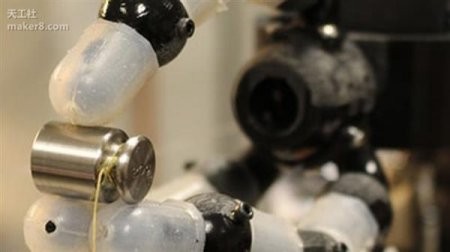The sensor is one of the essential parts of the machine, which has driven the development of many machines. Recently, the development of the telescopic optical sensor at Carnegie Mellon University has brought the flexibility of the robot to a higher level.
Researchers at Carnegie Mellon University have developed a three-finger soft robotic hand with multiple 3D printed fiber optic sensors and a new type of retractable optical sensor. This soft robotic hand can detect forces below one tenth of a Newton. The project was supported by NASA.
Using fiber optics, the research team placed 14 tension sensors in each robot finger that were designed to mimic the bone structure of human fingers. The fingertips of each finger and the two "phalangles" are 3D printed. These "phalangles" are connected by joints, and the joints are covered with a silicone rubber "skin". This technique provides the machine's finger with the ability to determine where its fingertips are in contact and detect the insignificant forces they are subjected to. Although the latest scalable optical sensing materials are not used in current versions of robots, researchers hope to use them in future soft robot skins for greater feedback.

Objectively speaking, currently used pressure or force sensors are problematic. This is because the wiring is too complicated and the sensor is easily broken. And they are extremely susceptible to interference from electric motors and other electromagnetic equipment. The use of fiber optic sensors does not have these problems, and even one fiber can contain several sensors. In this project, all the sensors on the robot's finger are connected to four fibers and they are fully immune to electromagnetic interference.
Hp Laptop 15S-Du 15S-Dy 15-Dw,Hp Laptop Top Cover,Hp Laptop Bottom Case,Hp15 Bottom Case
S-yuan Electronic Technology Limited , https://www.syuanelectronic.com
